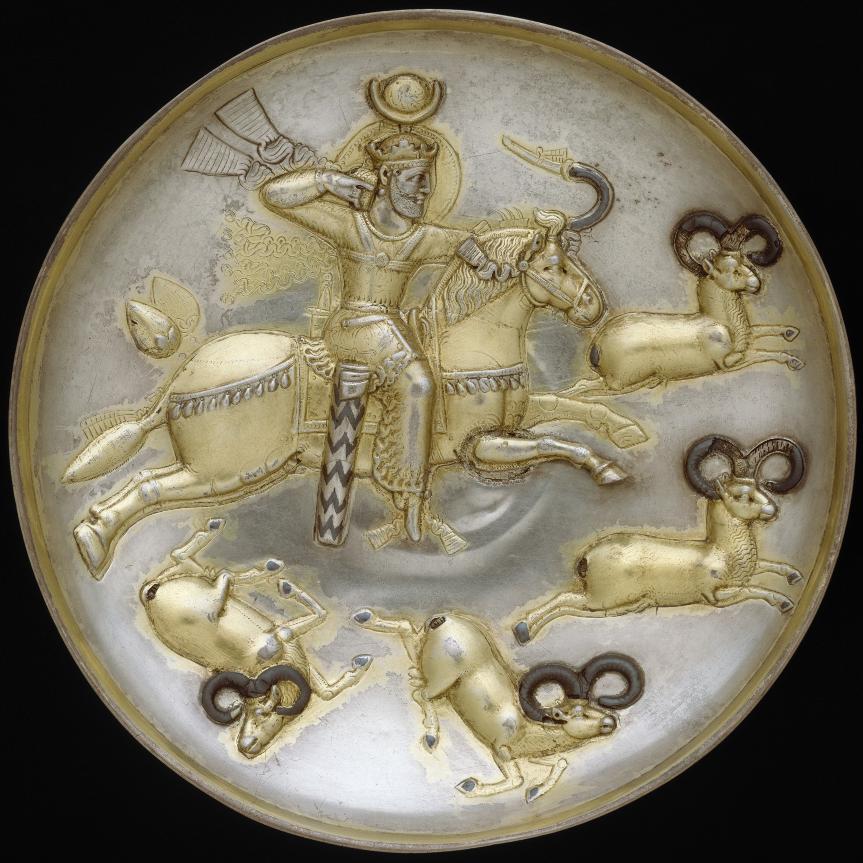|
|
The "Qazvin Hunting Plate"
A Sasanian King Hunting Rams

A larger image of The "Qazvin Plate" A Sasanian King Hunting Rams
Period: Sasanian
Date: ca. A.D. mid-5th–mid-6th century
Geography: Iran, said to be from Qazvin
Culture: Sasanian
Medium: Silver, mercury gilding, niello inlay
Dimensions: H. 1 7/8 in. (4.6 cm), Diam. 8 5/8 in. (21.9 cm)
Credit Line: Fletcher Fund, 1934
The king as hunter had become a standard royal image on silver plates during the reign of Shapur II (A.D. 310–379).
The theme, symbolizing the prowess of Sasanian rulers, was used to decorate these royal plates, which were often sent as gifts to neighboring courts.
The king has various royal attributes: a crown and fillet, covered globe, nimbus with beaded border, and beaded chest halter with fluttering ribbons.
The identity of the Sasanian king on this plate is uncertain. His crown identifies him as either Peroz (r. 459–484) or Kavad I (r. 488–497, 499–531).
Sasanian silver bowls were usually hammered into shape and then decorated in various complex techniques.
On this plate, separate pieces of silver were inserted into lips cut up from the plate to provide high relief.
The vessel was then gilded using an amalgam of mercury and gold, which could be painted onto the surface, and niello—a metallic alloy of sulfur and silver—was inlaid.
The result was a vessel of varied surface contours and colours.
The Metropolitan Museum of Art, New York. Accession Number: 34.33
Back to Sasanian and Central Asian Plates
|
|